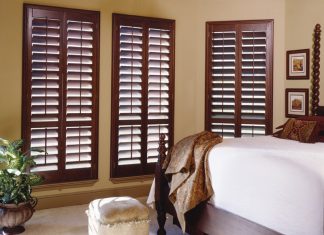For even the simplest of things, there is a lot of thought that goes into design. Ceiling fans are no exception, especially considering just how much variety and history there is in them. Ceiling fans are typically good for keeping you cool, but that is not the limits to it: you can even use a ceiling fan to make yourself feel warmer in the winter! But what all goes into the design and mechanisms of a ceiling fan?
How do ceiling fans work?
A common conception of ceiling fans is that they cool the room, but that is simply not true. What the fan does is make you feel as if the room is cooler. This is done by pushing the air downward, which then moves your body heat away from you, thus making you feel cooler as a result. It also helps control the humidity of the room. An electric ceiling fan does this through the use of a motor, which turns a shaft which contains an impeller (a kind of rotor). Fans can even help make the room feel warmer through similar means. In order to do this, you would have the fan move in the opposite direction. As a result, the heat that rose to the top of the room would instead be pushed down to your level instead. However, be mindful that you use the lowest setting for this, as if you go any higher, it may simply make the room feel cooler instead. This is the last thing you want the room to feel like in the winter.
What kinds of design concepts are used for ceiling fan designs?
There are a lot of aesthetics that can be incorporated into your ceiling fan. For example, you can look into buying modern ceiling fans if you want to enjoy a sharp aesthetic. Alternatively, you may be more interested in something fancier. If that describes you, you should consider looking into an antique ceiling fan.
What are the ceiling fan blades usually made of?
Different ceiling fans have various differences, including the design of their blades. Not just in terms of their shape and style, but also in terms of the material that goes into them. One of the more common types of fan blades are plastic blades, and people who have had to shop for a ceiling fan on a budget are likely to be familiar with this kind of fan. These kinds of fans are certainly cheap, but when you go with them, you need to be ready to repair and replace them more often than a more premium alternative.
Another type of fan blade that is similarly common are timber ceiling fan blades. Much like plastic ceiling fan blades, timber ceiling fan blades are relatively inexpensive, and they have a lot more durability when compared to plastic ones. These are best used depending on the environment; in particularly warm environments, for example, going with timber ceiling fan blades would be a waste in the long run.
The next most common blade type, cloth ceiling fan blades, are much more common in the past than they are now. They are lower maintenance, but the tradeoff is that they are not as powerful as other ceiling fan blade types.
Are metal blades dangerous in ceiling fans?
This is a common question asked, and it’s a valid one. After all, fans (ceiling or otherwise) have a lot of myths regarding how dangerous they are, such as the idea that one could lose an appendage from touching a fan that kids thought to be true. However, metal fans are markedly more dangerous than other kinds of fan blade materials, and a kid who finds themselves on the wrong end of one of their blades could sustain a serious injury as a result. If you are ever considering metal blades for your ceiling fan, make absolutely sure that there is little to no risk that this will put anyone in your household at serious risk of injury or worse.
Besides the potential dangers of metal blades, they also have the issue of being noticeably louder than most other blade types. However, it should still be noted that metal blades have the advantage of being easier to clean and being more likely to last longer. You should expect to pay more money for this kind of ceiling fan, anyway.
How far back do ceiling fans date?
Ceiling fans are an age-old concept, one enjoyed by people all the way back in 500 BC in India. Today, people in India use a ceiling fan, known as a punkah, which is based on the concept of a fan made with leaves which circulates air using a cord. However, the first electrically powered ceiling fan invented was created multiple millennia afterward, in 1882, by Philip Diehl. This fan adapted motors used in Singer sewing machines to make this a reality.















